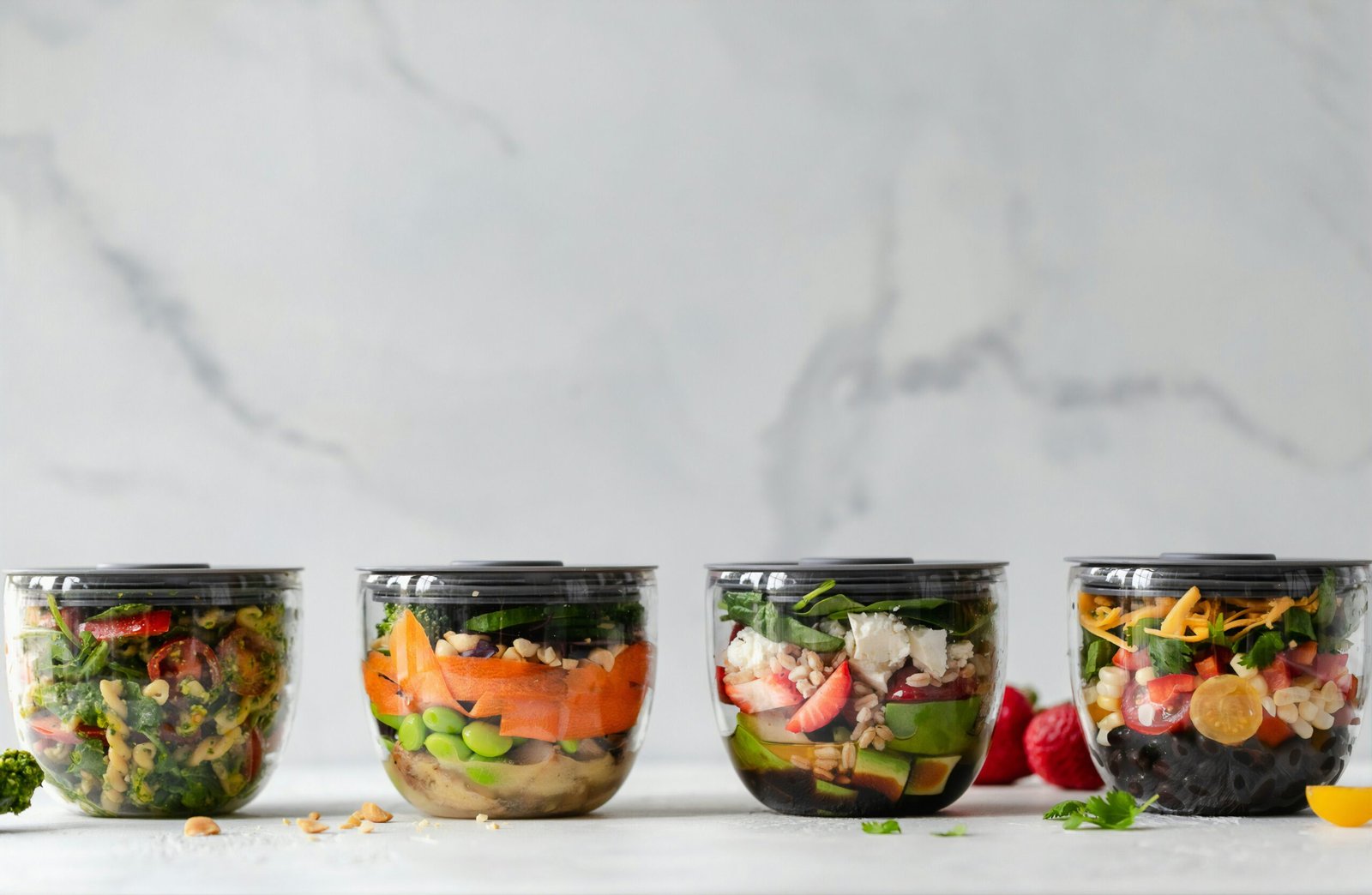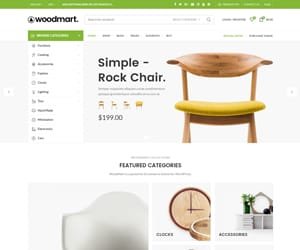Mastering Meal Prep: The Best Strategies for Simplifying Your Cooking Routine

Introduction to Meal Prep
Meal prepping has gained significant popularity in recent years as a strategic approach to cooking that accommodates the fast-paced lifestyles of many individuals today. At its core, meal prep involves preparing and organizing meals ahead of time, allowing for streamlined cooking and greater efficiency during the week. This practice not only aids in saving time but also plays a fundamental role in promoting healthier eating habits.
One of the significant benefits of meal prepping is its ability to help individuals manage their food budgets effectively. By planning meals in advance, cooks can take advantage of bulk purchasing and reduce impulse buying, ultimately leading to significant savings. Additionally, meal prep encourages a conscious approach to eating, which can aid in understanding portion control. By pre-portioning meals, individuals are less likely to overindulge or waste food, thus creating mindful eating practices that contribute to overall health.
Moreover, meal prepping serves as an effective tool to minimize food waste. By thoughtfully planning meals and utilizing ingredients efficiently, individuals can ensure that every purchase is maximized, leading to reduced waste and a smaller environmental footprint. In the context of contemporary concerns regarding sustainability and food resources, meal prep can be viewed as a responsible choice.
The trend of meal prepping continues to surge, underscored by the growth of social media platforms where individuals share their creative meal prep ideas, tips, and recipes. This community-driven approach not only provides inspiration but also showcases the effectiveness of meal prepping in diverse diets and culinary preferences. Consequently, meal prep has become more than just a cooking technique; it is a lifestyle choice that resonates with those seeking to regain control over their eating habits amidst a busy environment.
Planning Your Meals: The Key to Successful Meal Prep
Effective meal prep begins with a thorough planning process, which serves as the cornerstone of a simplified cooking routine. By dedicating time each week to organize meals, individuals can streamline their cooking efforts while ensuring that nutritional needs are met. When selecting recipes, it’s important to consider a balance of macronutrients, including proteins, fats, and carbohydrates, alongside essential vitamins and minerals. This consideration not only supports overall health but also aligns meal choices with personal dietary preferences and restrictions.
Incorporating seasonal ingredients can enhance the flavor and nutritional value of meals, as they are often fresher and more affordable. For instance, utilizing vegetables in peak season can lead to a more vibrant and diverse plate, which can inspire creativity in the kitchen. It’s also essential to adapt recipes based on individual dietary restrictions, ensuring that everyone in the household can enjoy the meals prepared. By creating a meal prep calendar that outlines planned recipes for each day, one can manage grocery shopping more efficiently while reducing food waste.
Utilizing planning tools, such as meal prep apps or physical planners, can further enhance this organizational process. Apps allow users to track inventory, generate shopping lists based on the chosen recipes, and even set reminders for food expiration. A well-organized meal prep calendar not only outlines what to cook but also offers flexibility for spontaneous changes that may arise during the week. In doing so, meal prep is transformed from a daunting task into a manageable and enjoyable routine, paving the way for culinary success at home.
Batch Cooking: Efficient Cooking Techniques for Meal Prep
Batch cooking is a highly effective approach that allows individuals to prepare multiple meals simultaneously, streamlining the process of cooking and serving nutritious food throughout the week. This technique not only saves time but also reduces food waste and optimizes grocery shopping. By dedicating a designated time for batch cooking, one can ensure a variety of meals ready to be enjoyed at any moment.
Various cooking methods lend themselves well to batch cooking, including roasting, grilling, and stir-frying. Roasting is particularly great for vegetables, proteins, and starches, as it enhances flavor while allowing for a hands-off approach. Simply chop your ingredients, toss them with olive oil, seasonings, and spread them on a baking sheet. Bake in the oven for large quantities at once. Grilling is another excellent option, especially for meats like chicken, fish, or even vegetables, which can be prepared outdoors or on a grill pan indoors. Stir-frying operates quickly and efficiently, allowing cooks to rapidly combine various prepped ingredients in a hot pan while retaining flavor and texture.
When it comes to choosing foods for batch cooking, items that freeze well, such as soups, stews, grains, and roasted meats, are ideal, allowing meals to be easily reheated. Beans, lentils, and whole grains can be cooked in large batches and incorporated into different dishes throughout the week, providing versatility. Other wonderful options include casseroles, chili, and hearty salads that maintain their integrity when prepped ahead of time.
To facilitate batch cooking, certain kitchen tools can significantly enhance efficiency. Investing in quality storage containers, a slow cooker, or an Instant Pot, as well as sharp knives and cutting boards, can streamline the process and minimize cleanup time. By carefully planning and using these methods and tools, individuals can make batch cooking an integral and successful part of their meal prep strategy.
Investing in The Right Meal Prep Containers
Choosing the right meal prep containers is crucial for anyone looking to streamline their cooking routine. The selection of materials can significantly impact both the functionality and longevity of these containers. Common options include glass, plastic, and stainless steel, each offering distinct advantages and disadvantages. Glass containers are not only durable but also non-toxic, ensuring that you do not compromise your food safety. They are often microwave and oven safe, making reheating meals straightforward. However, they can be heavier and more expensive than their plastic counterparts.
Plastic meal prep containers, on the other hand, are lightweight and often more affordable. They are generally available in numerous sizes and shapes, providing flexibility for storing various foods. It is essential to choose BPA-free options to avoid harmful chemical leaching. However, plastic containers may not be as durable as glass or stainless steel and can stain or retain odors from food over time.
Stainless steel containers represent another excellent alternative, particularly for those who prefer eco-friendly options. They are long-lasting, resistant to staining, and can be recycled at the end of their life. However, their heavier nature and lack of transparency can be drawbacks when monitoring food contents. To optimize storage and organization, consider investing in a variety of sizes and shapes that can stack efficiently in your refrigerator or pantry.
When organizing your meal prep containers, it is advisable to label each container, indicating the meal or ingredient stored inside. Consider adopting a system that places the oldest meals in front to encourage timely consumption. This approach not only helps keep your refrigerator or freezer clean but also reduces food waste. Ultimately, selecting the right meal prep containers tailored to your needs can revolutionize your cooking routine.
Incorporating Variety: Avoiding Meal Prep Boredom
Meal prep is a fantastic way to simplify your cooking routine and maintain a healthy diet, but a common challenge many face is monotony. Repetitive meals can lead to disinterest in your healthy eating habits, making it essential to incorporate variety into your meal prep. One effective strategy is to mix and match ingredients. For instance, rotating between different protein sources such as chicken, fish, tofu, and legumes can keep your meals exciting while providing diverse nutritional benefits.
Additionally, experimenting with various flavor profiles and cuisines can significantly enhance your meal prep routine. Consider dedicating a week to exploring different global cuisines, such as Italian, Mexican, or Asian. By introducing unique spices and herbs pertinent to these regions, you can elevate the taste of your dishes and avoid the dreaded meal prep boredom. Common spices like cumin and turmeric can not only diversify flavors but also offer health benefits as well.
The use of sauces can also dramatically change a dish’s profile. For example, a simple grilled chicken breast can be transformed into a zesty meal with the addition of a homemade chimichurri or a tangy lemon herb sauce. Keeping various sauces and dressings on hand allows for quick modifications to your meals, which can greatly enhance your dining experience without requiring additional cooking time.
Lastly, seasonal produce can serve as a means to introduce freshness and excitement to your meals. Shopping at local farmers’ markets can inspire you to utilize ingredients that are at their peak, encouraging creativity in your meal ideas. Seasonal vegetables and fruits not only boost the flavor of your meals but also enhance their nutritional value, making your meal prep more enjoyable and satisfying.
Time-Saving Tips: Making Meal Prep Efficient
Efficient meal prep is essential for maintaining a balanced diet while managing a busy lifestyle. To streamline your cooking routine, consider implementing effective shopping strategies. Begin by organizing a shopping list that corresponds to your meal plan for the week. This not only helps in purchasing only necessary items but also minimizes time spent wandering through the aisles. Additionally, consider shopping during off-peak hours to avoid long lines and crowded spaces.
Another valuable tip is to pre-chop your vegetables. Set aside some time on the weekend to wash, peel, and chop your vegetables. Store them in airtight containers in the refrigerator, ensuring they remain fresh and ready for use throughout the week. This simple preparation step can significantly reduce cooking time on busy weekdays, allowing one to throw meals together quickly without much effort.
Cooking grains in bulk is another effective strategy. Preparing a larger quantity of grains such as quinoa, brown rice, or farro at once allows you to have versatile bases ready for various meals. Store the cooked grains in individual portions, making them easy to incorporate into lunches or dinners, and providing convenient options for stir-fries, salads, or grain bowls.
Utilizing kitchen gadgets can also heighten efficiency in meal prep. Slow cookers and Instant Pots, for example, offer unparalleled convenience for preparing meals without constant monitoring. By allowing you to set ingredients in the morning and return to a fully cooked dish, these appliances can be true time-savers. Additionally, consider using sheet pans to roast multiple vegetables or proteins simultaneously, capitalizing on the oven’s heat while saving energy and time.
By adopting these time-saving tips into your meal prep routine, you can transform your cooking experience into a seamless process, ultimately leading to healthier eating without the stress of daily cooking.
Healthy Meal Prep Recipes to Get You Started
Meal prepping can be an efficient and rewarding approach to healthy eating. By preparing meals in advance, individuals can ensure they have nutritious options readily available, which aligns with various dietary needs. Here are a few healthy meal prep recipes that cater to different preferences and can be adapted to keep meals exciting.
For a vegan option, consider a quinoa and black bean salad. This dish is not only packed with protein but is also refreshing and easy to prepare. Combine cooked quinoa with canned black beans, diced bell peppers, corn, and a handful of cilantro. Dress it with a mixture of lime juice, olive oil, and cumin for an added flavor boost. A typical serving size would be about one cup, making it simple to divide into multiple containers for the week.
If you have specific gluten-free requirements, a sweet potato and spinach frittata is an excellent choice. To prepare, whisk together eggs, adding in cubed sweet potatoes and fresh spinach. Bake until set, then slice into wedges for easy portioning. Each wedge can serve as a protein-rich breakfast or snack, catering to those maintaining a gluten-free diet while offering wholesome nutrition.
Finally, for those looking to increase their protein intake, a chicken and broccoli stir-fry can be a good fit. Simply grill or stir-fry chicken breast pieces, then add in fresh broccoli and a low-sodium soy sauce alternative. Portion out the stir-fry with a side of brown rice or cauliflower rice for a balanced meal. This recipe is not only high in protein but is also a vibrant option that can help prevent meal fatigue with its colorful ingredients.
These recipes emphasize versatility, allowing for ingredient substitutions based on personal preferences or what’s available. Meal prepping can ease the stress of nightly cooking while ensuring healthy options are always accessible.
Storing and Reheating Meal Preps Safely
Proper storage and reheating of meal preps are fundamental aspects of ensuring food safety and maintaining the quality of your cooked dishes. When it comes to refrigeration, cooked meals should be promptly transferred to airtight containers and placed in the refrigerator within two hours of cooking. This practice helps to inhibit bacterial growth by keeping food at a safe temperature of 40°F (4°C) or below. It is important to label each container with the date of preparation, allowing for easy tracking of freshness.
For longer-term storage, freezing is an excellent option. Dishes that are well-packaged in freezer-safe containers or vacuum-sealed bags can maintain their quality for three to six months. Freezing effectively halts spoilage, but it is essential to cool cooked meals before placing them in the freezer to minimize ice crystal formation, which can negatively affect texture and flavor. When freezing, remember to leave some headspace in containers, as liquids expand when frozen.
Reheating your meal preps also requires careful attention to food safety. The USDA recommends reheating food to an internal temperature of 165°F (74°C) to ensure that any potential bacteria are killed. This can be achieved through methods such as microwave heating, oven baking, or stovetop reheating. For microwave reheating, be sure to stir food midway through to promote even heating, and cover the container to retain moisture and heat.
It is also crucial to avoid reheating food multiple times, as repeated thermal cycles increase the risk of foodborne illnesses. Lastly, do not forget to check for any spoilage signs such as off-smells, discoloration, or mold before consuming stored meals. Adhering to these guidelines will help ensure that your meal preps remain safe to eat and enjoyable for your dining experience.
Conclusion: Embracing the Meal Prep Lifestyle
Incorporating meal prep into your daily life offers a multitude of advantages that can significantly improve both your cooking routine and overall lifestyle. By planning your meals in advance, you can save time and reduce the stress associated with having to decide what to cook each day. This preparation not only streamlines the cooking process but also helps you maintain a healthier diet, as it encourages the use of fresh ingredients and allows for better portion control. Moreover, meal prepping can lead to financial savings as you can buy ingredients in bulk and minimize food waste.
Engaging in meal prep empowers individuals to experiment with their culinary skills, fostering creativity in the kitchen. It provides the opportunity to explore new recipes, utilize diverse ingredients, and customize meals according to personal taste preferences and dietary needs. As you embrace a meal prep routine, you may find that it enhances your relationship with food, transforming it from a burdensome task into an enjoyable and fulfilling experience.
As you consider the transition to this lifestyle change, start by assessing your current cooking habits and identifying areas for improvement. Set realistic goals, such as preparing meals for a few days at a time, gradually expanding as you become more comfortable with the process. Remember that meal prep is adaptable; there are various strategies and techniques to suit different schedules and family dynamics. With consistent practice, you will likely discover a routine that works best for you, leading to sustained benefits.
Embrace the meal prep lifestyle with enthusiasm and an open mind. Not only will you reap the immediate rewards of time-saving and nutritious meals, but you will also cultivate a more mindful approach to cooking that sets the foundation for long-term health and wellness. Taking the first step today can lead to a more balanced culinary journey tomorrow.





















